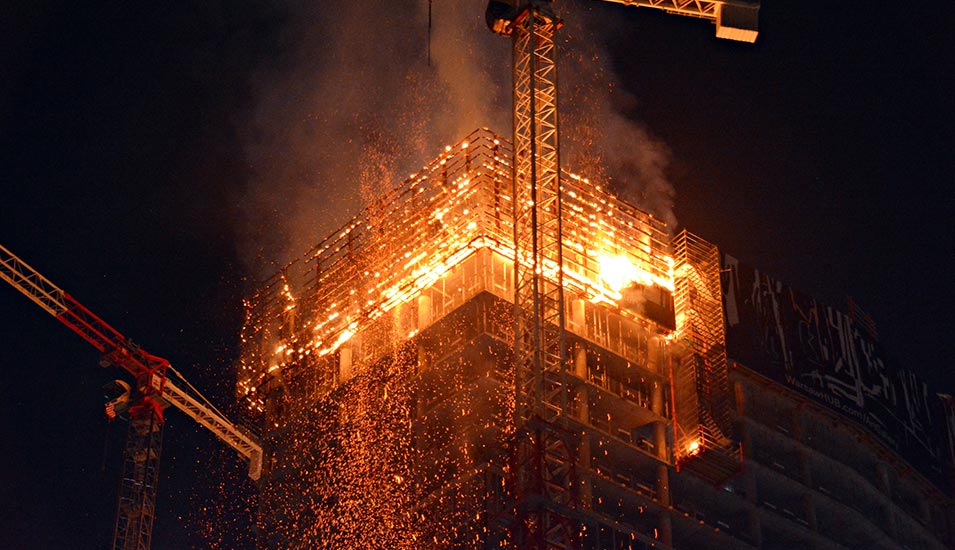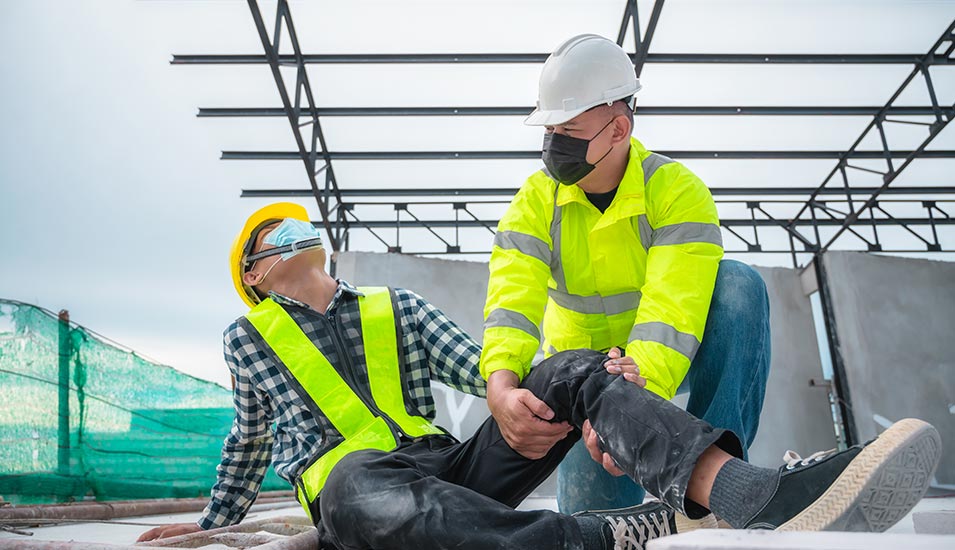
If you need specific flame retardant material for a job on a construction site or other industry, then it’s worth checking the product you are buying. Obviously for safety reasons, you must be very sure that the item you are using is correctly labelled. For example, debris netting can be flame retardant or not, so you have to check. But what makes material flame retardant in the first place?
Table of contents:
Science Behind What Makes Material Flame Retardant
In general, flame resistant fabrics are made up of synthetic fibres that resist catching fire when they are exposed to heat. Instead of burning, the fabrics will eventually start to melt. So fire resistant material doesn’t burn easily, but that’s not to say it doesn’t burn at all.
If you take non fabrics such as plastic for example, this is a combustible material because it has a lot of carbon and hydrogen available to fuel a fire. Likewise, gas is even more combustible. That’s because it has carbon and hydrogen, and it can evaporate easily so it’s volatile.
Whereas bricks are highly resistant to heat, which is why they continue to be useful in construction. Concrete is also hard to combust as flame retardant chemicals are added in the mixing process.
However, for the purpose of this article, the focus is on flame retardant material and fabric.
How To Make Material More Flame Retardant
Because there is not a single material that is 100% fire proof, there are ways to increase the level of flame resistance.
Chemicals put onto material or fabric can make it more fire retardant and help to slow or extinguish a fire that is already burning. However, some chemicals can also react badly and cause potential toxicity to flames as they burn. Therefore, it can cause controversy by adding chemicals to make material more fire retardant. That’s because the toxic output of a burning fire can be very dangerous to workers.
Hence QubeUK sell a water based spray that helps to make material and fabric more flame retardant.
What Is Polya Spray?
Polya FRS100 is a non toxic formula water spray which can treat any water absorbent material. Tests show that Polya FRS100 can effectively increase fire retardant levels in materials including cardboard, untreated wood, polystyrene, hessian, foam and rubber. As well as any other item that can absorb it.
The treatment lasts for the useful life of the item or material. However, the team at QubeUK recommend getting a new treatment every 12 months, or if the fabric gets wet in any way.
Correct Terminology
You may see a material or fabric with the label ‘fireproof’. This is actually not correct, because almost anything containing carbon, if hot enough, can catch fire. Therefore ‘fire resistant’ or ‘flame retardant’ are more accurate in terms of language.
Why Use A Fire Retardant Spray
By treating materials with a fire retardant spray, you are helping to significantly slow the spread of fire should one happen. In simple terms, it can give you more time to seek help, slow the damage and reduce the chance that the material will ignite in the first place. Ultimately, if you are in charge of health and safety on your site, then you are making it a safer place to work.
What Regulations Cover Flame Retardant Material
When it comes to flame retardant material, there are no specific European standards. However, the Health and Safety Executive recommends the following preventive actions when using combustible materials.
- Manage the fire risk by reducing the amount of combustible material in the work area until it is needed.
- Where possible, choose and specify materials that are less combustible.
- Ideally store combustible materials outside buildings under construction.
- Keep the site tidy to make sure all emergency routes are accessible
- Take extra precautions when using volatile flammable materials such as liquids, gases and oxygens.
- If using protective coverings such as debris netting or scaffold sheeting, these may add to a fire risk. Reduce the risk by using flame retardant materials.
Can You Rely on Flame Retardant Sprays or Additions
By ensuring the material you are using is more flame retardant, you are making the space a safer area. However, as mentioned before, you cannot make any material or object completely 100% flame proof. What you can do is to reduce the likelihood of it catching fire or spreading fire. Therefore it’s important to use flame retardant sprays in situations where you may identify the risk of a fire.
For example, perhaps you are in the construction industry and you put in some debris netting to protect people below from falling debris. However, you also identify the potential risk of a fire, because of some of the materials you are using or the general nature of the job. Therefore, in order to create another line of safety, you can use a flame retardant spray on the debris netting. So if a fire does happen, you have a better chance to stop it spreading.
Conclusion: What Makes Material Flame Retardant
To conclude, sadly each year there are a number of serious fires on construction sites. Not only do they cause significant damage and financial setbacks, fires can also risk the lives of your team. You can help to avoid a serious fire by taking the necessary safety assessments before the job starts.
Flame retardant sprays are a useful option, but they are a second line of defence. They should always be used in conjunction with other safety precautions and not as a guaranteed way of preventing fire. Hence you still need to make sure you have taken all the sensible fire safety precautions first. Part of this is to make the materials you are using more flame retardant than they were before.

